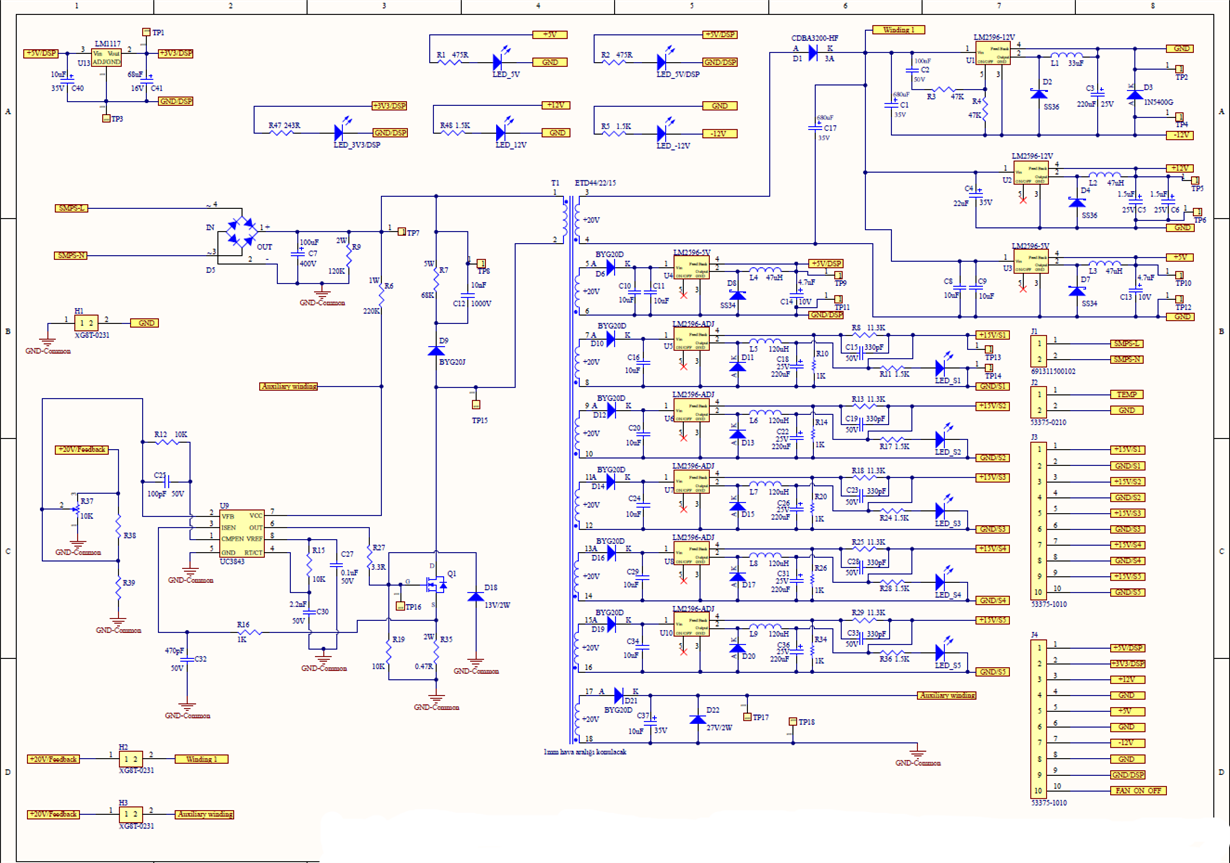Other Parts Discussed in Thread: TL431, UC3842, LM2596
Hi Everyone,
We are using UC3843 to get AC/DC Auxiliary Power Supply. Please Find Schematics below.
Regarding to below schematic, is there any problem? For the feedback pin which header (H2 or H3) should I use?
Since it is a high voltage AC circuit, how can I start to run circuit step by step? Do you have any suggestion?



